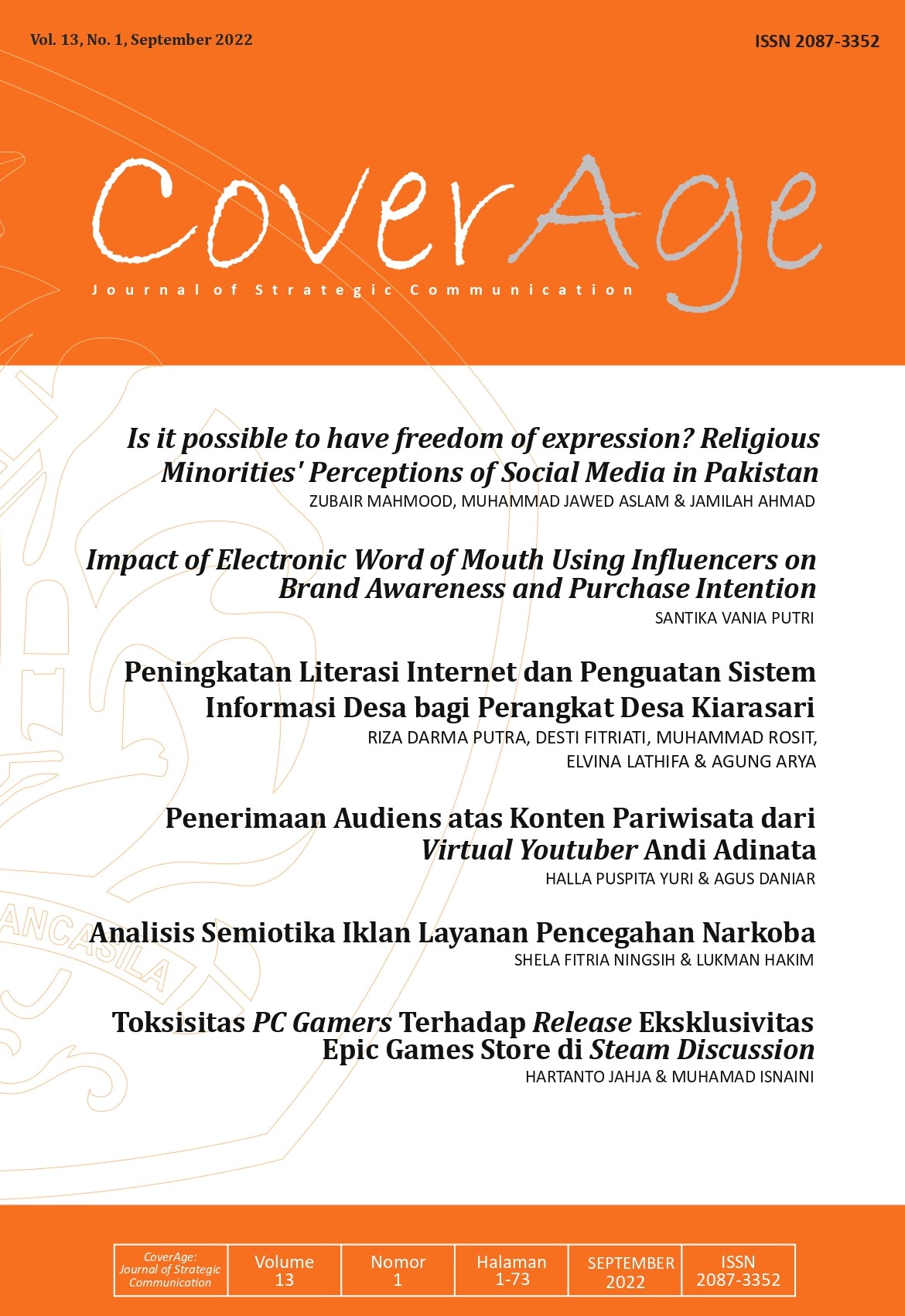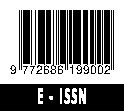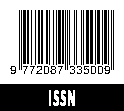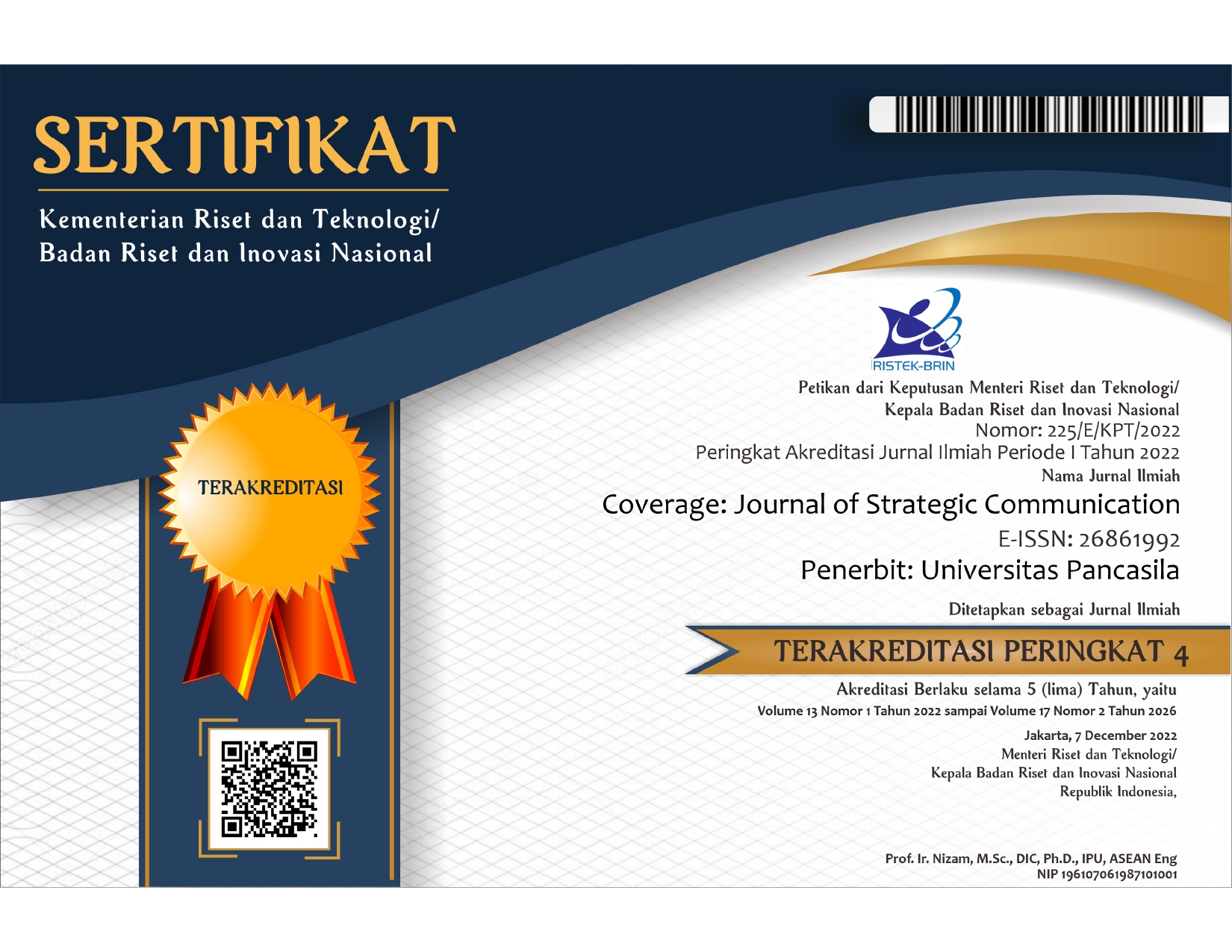Is it possible to have freedom of expression? Religious Minorities' Perceptions of Social Media in Pakistan
DOI:
https://doi.org/10.35814/coverage.v13i1.3389Keywords:
Minorities, Freedom of Expression, FacebookAbstract
This research article aims to understand that why social media is being perceived for freedom of speech by religious minorities in Pakistan. This qualitative study is based on four in-depth interviews of Christian activists in Pakistan. The study found that there are some crucial issues in giving media coverage to the religious minorities in Pakistan.The results demonstrate that religious minorities in Pakistan are facing segregations due to the prejudiced mindset of higher administration decisions, sponsors and lack of information with respect to religious minorities and their religious rituals. Besides, that absence of resistance from both minorities and larger part is playing the part in wrecking peace. The researchers found that English media whether print or electronic are giving adequate scope to the religious minorities in Pakistan. Furthermore, religious minorities in Pakistan are more inclined towards using social networking sites like Facebook to exercise their freedom of speech and expression as its more convenient in conveying the message without any mediated angling.
References
Adamus-Matuszynska, A. (2010). Social media in public relations: practice and education.
Alam, M. A., Rehmat, A., Naeem, W. (2021). Islamabad, Pakistan: Regulatory Repressions Amid Pandemic: State of Digital Media Freedoms in Pakistan 2021. IRADA: Institute of Research, Advocacy and Development.
Ali, S. (2004). Urdu press of Pakistan and image of the minority Groups. Journal of Social Sciences & Humanities, 12(1).
Ali, S. (2010). Portrayal of Minorities in Elite English Press of Pakistan: A Study of Daily Dawn and the Nation. Pakistan Journal of Social Sciences (PJSS), 30(1), 141-156.
Amaro, H., Cortes, D., & Cacari-Stone, L. (2006). Improving research on Hispanic drug abuse: Key strategies for policy makers. National Hispanic Science Network.
Ambreen, Q. (2014). Representation of Religious Minorities in Pakistani Print Media: a study of Daily Dawn, the News and the Nation. American International Journal of Contemporary Research.
Ansari, M. (2006). Minorities in Pakistan. Retrieved January 3, 2006 from http://www.thepersecution.org/di/newline_p.pdf.
Barcus, E. F. (1983). Image of life on children’s television. New York: Preager.
Batool, S., Sultana, S., & Tariq, S. (2021). Social Media and Religious Minorities: Analyzing the Usage of Facebook Groups among Christian Minority to Highlight their Issues in Pakistan. Global Mass Communication Studies Review, VI(I), 117-132.
Bourdieu, P. (1987). The Force of Law: Toward a Sociology of the Juridical Field, Translatedby Terdiman, R., Hastings Law Journal, 38, 805-853.
Eijaz, A. (2010). Media representations and social meanings of blasphemy laws in Pakistan. International Journal of Muslim Unity (IJMU), 8(1&2), 47-71.
Entman, R. M. (1992). Blacks in the news: Television, modern racism and cultural change. Journalism Quarterly, 69(2).
Faruqi, M. (2011). Jinnah Institute Research Report, A report on the status of religious minorities. Retrieved 11 29, 2014, from http://www.jinnah-institute.org/: http://jinnah-institute.org/programs/open-democracy-initiative/ji-fos/306-a-question-of-faith-a-report-onthe-status-of-religious-minorities-in-pakistan
Fatah, B. K. (2014). Minorities’ Stereotypes in Pakistani Films. The European Conference on Film & Documentary 2014 (11-26). Brighton, United Kingdom.
Frankenberg, R. (1997). Local whiteness, localizing whiteness. In R. Frankenberg (Ed.) Displacing Whiteness: Essay in social and cultural criticism.Durham, NC: Duke University Press.
Georgiou, R. S. (2005). Editorial Introduction: Media and Minorities in Multicultural Europe. Journal of Ethnic and Migration Studies, 433-441.
Gerbner, G. (1970). Cultural Indicators: The Case of Violence in Television Drama. The ANNALS of the American Academy of Political and Social Science, 69-81.
Greenberg, B. S., & Brand, J. E. (1993). Cultural diversity on |Saturday morning television in G. Berry & J. K. Asaman (Eds) children and television in changing Socio- Cultural world. New Bury Park, CA: Sage.
Group, I. C. (2014, January, 23). Policing Urban Violence in Pakistan. International Crisis Group; Asia Report No. 255, 4.
Gul, R. (1999). Pakistani minorities and separate elections. (Unpublished Thesis). Department of Political Science Post Graduate College. D. G. Khan, Pakistan.
Hamburger, Y. A., &Vinitzky, G. (2010). Social network use and personality. Computers in Human Behavior, 26. (1289-1295).
Heer, D. (1996). Immigration in America’s future: Social science findings and the policy debate. Boulder, CO: West view Press.
Heeter. (1983). Cross media coverage of local Hispanic American news. Journal of Broadcasting, 23(2).
Hussain, M. (October 2000). Islam, Media and Minorities in Denmark. Current Sociology, 95-116.
Jalalian, M., Latiff, L., Hassan, S. T. S., Hanachi, P., & Othman, M. (2010). Development Of A Questionnaire For Assessing Factors Predicting Blood Donation Among University Students: A Pilot Study. Southeast Asian Journal of Tropical Medicine and Public Health, 41(3), 660.
Javaid, U., & Saeed, H. R. (2012). Contending Ethnic identities: an issue to Pakistan’s internal security (the case of Karachi). Journal of Political Studies, 19(1), 57.
Kaplan, A. M., & Haenlein, M. (2010). Users of the world, unite! The challenges and opportunities of Social Media. Business horizons, 53(1), 59-68.
Khan, M. S., & Rafi, G. (2014). Religion, Politics and the Christians of Pakistan: Is KPK a Better Option to Live?. Middle-East Journal of Scientific Research, 21(6), 975-983.
King, R. (2007). The association of ‘religion’ with violence: reflections on a modern trope.” Religion and Violence in South Asia: Theory and Practice. Routledge, London.
Liaquat, S., Qaisrani, A., & Khokhar, E. N. (2016). Freedom of Expression in Pakistan: A myth or a reality. Working Paper #159. Islamabad, Pakistan: A publication of the Sustainable Development Policy Institute (SDPI).
MacDonald, F. J. (1992). Blacks And White TV: African Americans in television since 1948. (2nd ed). Dushkin Publishers.
Mahmood, Z., & Ahmad, J. H. (2015). Trends of facebook use among university students in Pakistan.
Mahmood, Z. (2019). The Uses and Gratifications of Facebook.com: An Exploratory study of University students in Pakistan.
McNally, D. P. G. (1983). Blacks and television: A comparison of portrayal of Black and White Characters on Television. (Unpublished doctoral dissertation). University of Maryland, College Park.
Munir, I. (2002). The Consequences of Fundamentalism on Pakstani Media. Simon Fraser University.
Perez, L. (1992). Cuban Miami. In G. J. Grenier & A. Stepick III (Eds.), Miami now! Gainesville: University of Florida Press.
Rahmat, A. (2010, May 24). Helping minorities find a voice in Pakistani media. (Blog) Retrieved from https://www.mediasupport.org/blogpost/helping-minorities-find-a-voice-in-pakistani-media
Rai, L. (2021, October 15). Social Media Brings Both Hope And Fear For Religious Minorities In Pakistan. The Friday Times, https://www.thefridaytimes.com/2021/10/15/social-media-brings-both-hope-and-fear-for-religious-minorities-in-pakistan/
Riggens, M. (1991). Color adjustment. (California newsreel). Dushkin Publishers.
Rizvi, H. A. (2011). Democracy in Pakistan. Project on State of Democracy in South Asia as part of the Qualitative Assessment of Democracy, Lokniti (Programme of Comparative Democracy), Centre for the Study of Developing Societies, Delhi.
Ross, C., Orr, E. S., Sisic, M., Arseneault, J. M., Simmering, M. G., & Orr, R. R. (2009). Personality And Motivations Associated with Facebook Use. Computers in Human Behavior, 25(2), 578–586Saeed, N. (2013). No home for persecuted Pakistani christians in any state. Pakistan Christian Post, retrieved from: www.pakistanchristianpost.com/headlinenewsd.php?hnewsid=3105.
Schneider, K. J. (1998). Towards a science of the heart. Romanticism and the revival of Psychology. American Psychologist, 53(3), 277-289.
Shahid, K. K. (2020). Amid digital crackdown, religious minorities strive to create safe spaces online. Digital Rights Monitor. Retrieved at: http://www.digitalrightsmonitor.pk/amidstdigital-crackdown-religious-minorities-striveto-create-safe-spaces-online/
Sidhwa, B. (1989). Ice candy man. South Asia Books.
Signoriellie, N. (1982). Marital status in television drama: A case of reduced options. Journal of Broadcasting, 26(2).
Suleri, A. (2011, January 6). Salman Taseer Could Have Been Alive, The Express Tribune, Retrieved from http://tribune.com.pk/story/99983/salmaan-taseer-could-have-been-alive/
Syed, J. (2008). The representation of cultural diversity in Urdu-language newspapers in Pakistan: A study of Jang and Nawaiwaqt. South Asia: Journal of South Asian Studies, 31(2), 317-347.
Tarin, H. & Uddin, A. (2013). Rethinking the “Red Line”: The Intersection of Free Speech, Religious Freedom, and Social Change, The Brookings Project on US Relations with the Islamic World US Islamic World Forum Papers. Retrieved from http://www.brookings.edu/~/media/research/files/papers/2013/11/us-islamic-world-forumpublications/free-speech_english_web.pdf
Viswanth, K., & Arora. (2000). Ethnic media in United States: An essay on their role in integration, assimilation, and social control. Mass communication & society 3. http://pakistanconstitutionlaw.com/
Whiteb, D. Z. (2009). Women and minorities on network television news: An examination of correspondents and newsmakers. Journal of Broadcasting & Electronic Media, 215-223.
Womack, D. C. (1988). Black participation in live Network Television interviews at the 1984 Democratic convention. Presented at the 71 annual meeting of the association for education in journalism and mass communication, Portland.





















